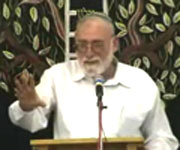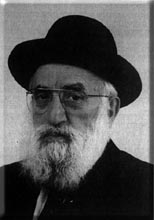Beit Midrash
- Sections
- Chemdat Yamim
- Parashat Hashavua
- Torah Portion and Tanach
- Bereshit
- Vayetze
At his last meeting with Lavan, after he embarked upon his return to Cana’an, Yaakov again took a rock and turned it into a monument, related to the non-belligerence treaty he made with Lavan (ibid. 31:45-53). Upon his return to the Land, Yaakov kept his promise and placed a monument at the place of his dream and called it Beit El (ibid. 35:14-15). Unfortunately, not much later, he had to erect another matzeva, at the burial plot of Rachel (ibid. 19-20).
Opposite the matzeva that Yaakov erected, made so Yaakov could pour libations to Hashem, Lavan’s relatives put together a pile of stones, which could serve for idol worship (see ibid. 31:46, which we understand as Yaakov telling not his "brothers" but Lavan’s, as we find the syntax regarding Paroh and Yosef’s brothers – ibid. 47:3).
Rabbeinu Bachyei connects between the story of Rachel’s stealing of her father’s terafim, to rid him of his idol worship, and the pile of stones that also symbolized idol worship. The agreement between Yaakov and Lavan therefore ended with Lavan swearing in the name of Nachor’s god and Yaakov swearing in the name of the G-d of Yitzchak, who had been bound to the altar as part of his dedication to belief in the one G-d (see also Abarbanel ad loc.). Upon this backdrop, we can suggest the following explanation.
Yaakov understood the deep significance of his flight to his uncle, Lavan’s, home, considering that the latter was a known idol worshipper. This was a very spiritually dangerous step. When he erected the matzeva in Beit El and made the promise about his return, he was proclaiming that even in Charan he would serve only the G-d of his father and his grandfather, who fought against all forms of idol worship. Yaakov’s placing of the rival monuments was also a declaration that there was a gulf between his approach and that of Lavan. Along those lines, he renewed his dedication to Hashem upon returning to Beit El. It is possible that Yaakov did not find out about Rachel’s stealing of her father’s terafim, and his curse of the thief was involved in her premature death. Even so, when Yaakov put a matzeva by her grave, this too was part of his creating a spiritual center, which stood as a lesson to the surrounding population of the approach of Avraham and Yitzchak, as the service of Hashem on a single rock was unique to them at that time.
It is true that after the giving of the Torah, a matzeva became forbidden, and an altar had to be built out of stones, which represented the idea of the members of the nation from their multiple tribes, joining together for service of Hashem through justice and charity (see Bereishit 18:19). May we succeed in building our state and society based on these ideals.

Interactions between Yehuda and Yosef over the Generations
Rabbi Yossef Carmel | Tevet 5783

Giving More Than You Have?
Rabbi Yossef Carmel | 20 Cheshvan 5767

Zaken Mamreh
Rabbi Yossef Carmel | 4 Elul 5767






















